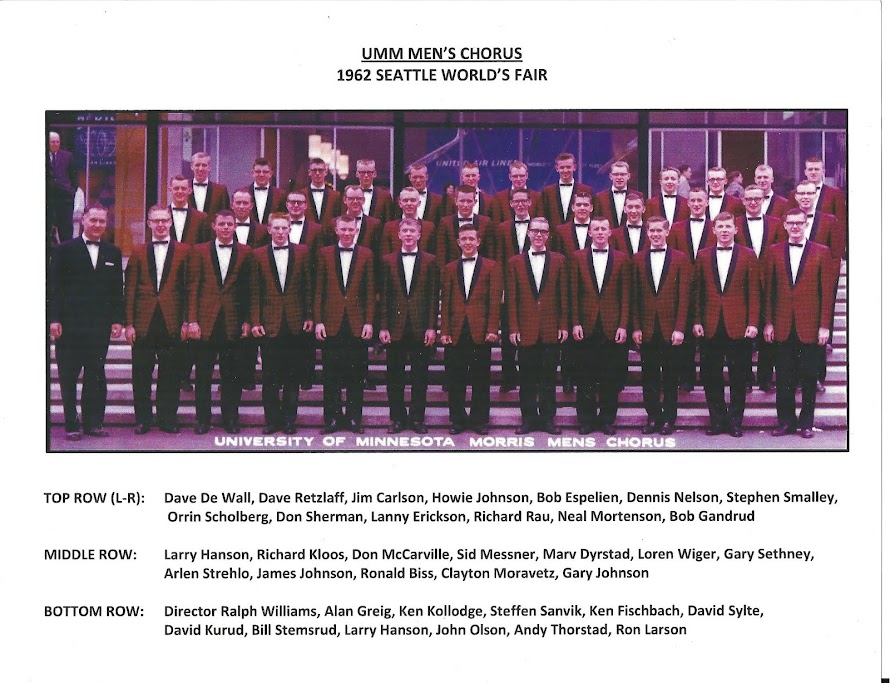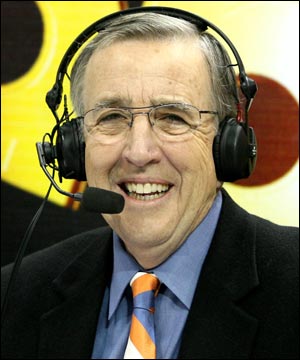The trumpet is often in the background in our popular music.
Instrumentalists outside of the standard guitar and bass add an
atmosphere of class and depth. Chase was not in the background. He
brought the trumpet right into the forefront. One of the trademarks of
his music was "cascading trumpets." You might remember his biggest hit:
"Get It On." That hit had cascading trumpets as a firm stamp. It's kind
of a waterfall of sound.
Chase and his band of nine pieces (unusual size) appealed to the
boomers. Some thought the trumpets were a bit too much. Many who
themselves were in band thought it was quite cool. Male trumpet players
were enthralled. Trumpet was associated almost exclusively with the male
gender. These boys thought it incredibly cool that Chase and Maynard
Ferguson had this ability to play high notes. Now I'm age 58 and don't
quite see what all the excitement was about. I'm more inclined to agree
with a family member of mine who once remarked "if they want to play
that high, why don't they just play a different instrument?" It's not
quite like saying the emperor has no clothes, but the point is similar.
Chase and Ferguson both came out of jazz. Both cut their teeth in
standard big band jazz. Ferguson never departed that far from his roots.
But Chase made an abrupt transition and went "hip" (with the boomers)
seamlessly. You'd never be reminded of Woody Herman, listening to the
Chase group's three albums. Chase's nine-piece band was "rock" with
absolute firmness.
He played in our community once. Very few people are around who'd
remember that. I wasn't there, but I remember the word about that
concert trending negative. It was about the volume. The "noise." Yes, I
realize a big part of rock in the '60s and '70s was intense volume. This
could go awry without proper management though. The loudness was
unpleasant. Thus I heard that many audience members didn't return to
their seats after intermission.
I was at a Ferguson concert in the mid 1970s where this problem surfaced. It was so "cool" to be loud then, some of these musicians neglected proper attention to detail and didn't adequately realize their audience really wanted good music, and not just to have their eardrums threatened. Boomers like me sometimes pooh-poohed our elders who'd say "that music is too loud." We can hang our heads about our old attitudes now.
I was at a Ferguson concert in the mid 1970s where this problem surfaced. It was so "cool" to be loud then, some of these musicians neglected proper attention to detail and didn't adequately realize their audience really wanted good music, and not just to have their eardrums threatened. Boomers like me sometimes pooh-poohed our elders who'd say "that music is too loud." We can hang our heads about our old attitudes now.
Chase may have had rough edges in his concerts and touring, if the
Morris concert was representative. However, his three studio albums were
stellar artistry. "Jazz-rock fusion" best describes. Oh yes, there was a
singer. The singer was a must for making the music commercially
appealing. Terry Richards sang on "Get It On." Later we got the vocal
cords of G.G. Shinn. These singers fit a mold. They most definitely
followed in the footsteps of the Blood, Sweat and Tears vocals. The
vocal style of Kenny Rogers was a prototype for this. It was an intense,
restless and gravelly tone. Those were restless times.
I'm biased because I once got to meet G.G. Shinn. The coterie of
Chase fans in Morris loved the intensity of Shinn's singing on the
group's second album, called "Ennea." (That's the Greek word for "nine,"
the size of the group.)
Band reunites on night of bridge disaster
Band reunites on night of bridge disaster
Del Sarlette and I got to meet Shinn at the unforgettable reunion
of Chase alumni in 2007. By coincidence it was on a night that would go
down in infamy in Minnesota historical annals. That bridge fell into the
Mississippi Rover. I thought it was incredible: Here I was in the Twin
Cities for the first time in years, and I have to call home and tell the
family I'm OK because I'm hearing these news reports on the radio about
the bridge collapsing.
It seemed eerie. Chase himself died in a sudden tragedy: the crash
of his plane in southern Minnesota. Ah, but let's not get superstitious.
There was a TV screen at the Minnesota Music Cafe where the reunion
concert was held. We saw constant coverage of the bridge disaster on
KSTP. But the concert itself was totally unimpeded.
First we saw some nostalgic slides of the Chase group's meteoric heyday. There he was, Bill Chase himself, the epitome of cool and on top of his game playing his "ax," the trumpet. How wonderfully gifted and inspired.
First we saw some nostalgic slides of the Chase group's meteoric heyday. There he was, Bill Chase himself, the epitome of cool and on top of his game playing his "ax," the trumpet. How wonderfully gifted and inspired.
A trumpet playing luminary from the present was at the concert to
do his best reflecting what Chase represented. This Asian talent: Eric
Myashiro. Actually there were several most outstanding trumpet players
present. The event was billed as a "trumpet summit" in addition to a
reunion.
The Minnesota Music Cafe is like a larger version of our Met Lounge
in Morris. It's "where the food's great and the music's cooking." It's
at 499 Payne Avenue, "on the edge of beautiful downtown St. Paul." A
reviewer has said "the Minnesota Music Cafe proudly holds a torch for
Minnesota's music history." The main clientele are known as
"working-class east siders."
Del and I brought some old vinyl record jackets from the Chase
years. We found the jackets themselves to be a bit of a curiosity. Are
we getting that old? Are the jackets in the pantheon of antiquity with
the Model T? Apparently yes.
"Get It On" crystallizes the memories
"Get It On" crystallizes the memories
Patrons of the Minnesota Music Cafe often hear R&B and blues.
But in August of 2007, the group "Chase" came to life as best it could
without the old leader himself. The concert climaxed at the end with
"Get It On." The cascading trumpets seemed never more powerful or
memorable. I remember like it was yesterday.
The original spelling of Bill Chase's last name was "Chiaise." It's
Italian. Bill's father played the trumpet. Bill got the opportunity to
hear Maynard Ferguson way back in 1950. Maynard was making a name for
himself with the Stan Kenton big band. The course of Bill's life seemed
fixed after hearing Maynard with Stan.
Bill went through a phase of studying classical trumpet. He kept on
climbing through the Berklee School of Music. He finally came on board
with Maynard himself in 1958. Then it was on to Kenton's band in '59,
and in the 1960s he found a long-term home with another fixture of the
big band world: Woody Herman and his "Thundering Herd" orchestra. I was
fortunate to hear the Herman band at the St. Paul Prom Ballroom in the
1970s. I heard the Kenton band in Willmar and St. Cloud. You could put
several pins on the map for where I heard Maynard. I heard the
incredible drummer Buddy Rich and his band at the Prom and at Orchestra
Hall. Del heard pretty much the same list.
Chase broke out as a group leader with his distinctive new band in
1971. Veteran jazz trumpeters were enlisted in this jazz-rock fusion
experiment. "Get It On" spent 13 weeks on the charts. Only Carly Simon
stood between Chase and the "Best New Artist" Grammy Award.
The first album, simply called "Chase," was unquestionably a labor
of love. Pop music had never seen anything quite like it.
The composition of this nine-piece group was unique. It was a
celebration of brass which drew raves from most young people who
themselves played brass instruments. It was a little risky trying to get
fans from the rest of the general public. It just seemed at times the
trumpets were "on the attack" in Chase music.
Boomers generally didn't mind "in your face" music with its
bluntness and bravado, played loud. Tastes eventually evolved. I think
the "unplugged" movement was a signal the public was ready to go back to
simple good music.
"What might have been. . ."
"What might have been. . ."
How would Bill Chase have evolved? It's the fascinating question
that gets asked in connection to deceased individuals like Chase, Buddy
Holly and Glenn Miller. It's so hard to know how their artistry would
have guided them. It's so tragic we could never find out. We had to
ponder on that hot August night in 2007 when the old Chase crowd
gathered again.
Chase's most devoted fans liked his second album, "Ennea," just as
much as his first. The general public did not follow. Shinn replaced
Richards for this album. Commercial success dropped off. "Ennea" had a
theme of Greek mythology for one whole side of the album. A single
release from the other side, "So Many People," got some airplay. The
Greek mythology theme didn't lend itself to radio.
The reunion band did some selections from the mythology suite. Del
and I were mesmerized as Shinn broke into the opening phrases of
"Aphrodite."
Bill Chase took a hiatus before coming out with the third
album called "Pure Music." Again his most firmly-planted fans were
thrilled. But there was no more commercial success as was once promised
by "Get It On." The third album included songs written by Jim Peterick
of the Ides of March, who sings on two of the songs. We had to laugh
during the reunion concert because one of the songs was deemed
inappropriate for political correctness reasons. This was "Run Back to
Mama." Would "misogynistic" be the word? I'd like to suggest just
writing new lyrics.
Chase was working on his fourth album when the end came. He was en
route to the Jackson County Fair, southern Minnesota, when he and three
band mates were killed in the plane crash. Those three were Wally Yohn
(keyboards), Walter Clark (drums) and John Emma (guitar).
I read that in 1977 a Chase tribute band released "Watch Closely
Now" but I didn't hear of it at the time. "Ghost bands" are much better
in theory than in practice. We'd love so much for the deceased to live
on with us. We'd love the music to just keep on resonating. But the
spark is gone. We can remember but we cannot deny the death of our idol.
We can remember the past so easily at the Minnesota Music Cafe. The
walls are lined with glass display cases housing old records, posters,
photos and the like, each one honoring a different local legend. All
this reminds of the old Lakeside Ballroom in Glenwood. Old photos there
stimulated memories too. I remember a "trough" for men to use in the
men's room - wow! - which surely wouldn't pass "code" today. The old
Lakeside burned down. There's a new facility there which might be called
a ballroom but it's in name only. There are no more "ballrooms."
The three Chase albums wouldn't sound dated, were they to be heard
by anyone unfamiliar today. They are sophisticated and inspired. The
reunion concert did justice to that commitment. It reminded how the
trumpet can be showcased in popular music and not just in the
background.
"Get It On" could practically bring tears, such did it re-kindle memories of the Chase heyday.
I wonder if the sound would reach the iconic departed musician in the next world: Bill Chase, RIP.
- Brian Williams - morris mn minnesota - bwilly73@yahoo.com







